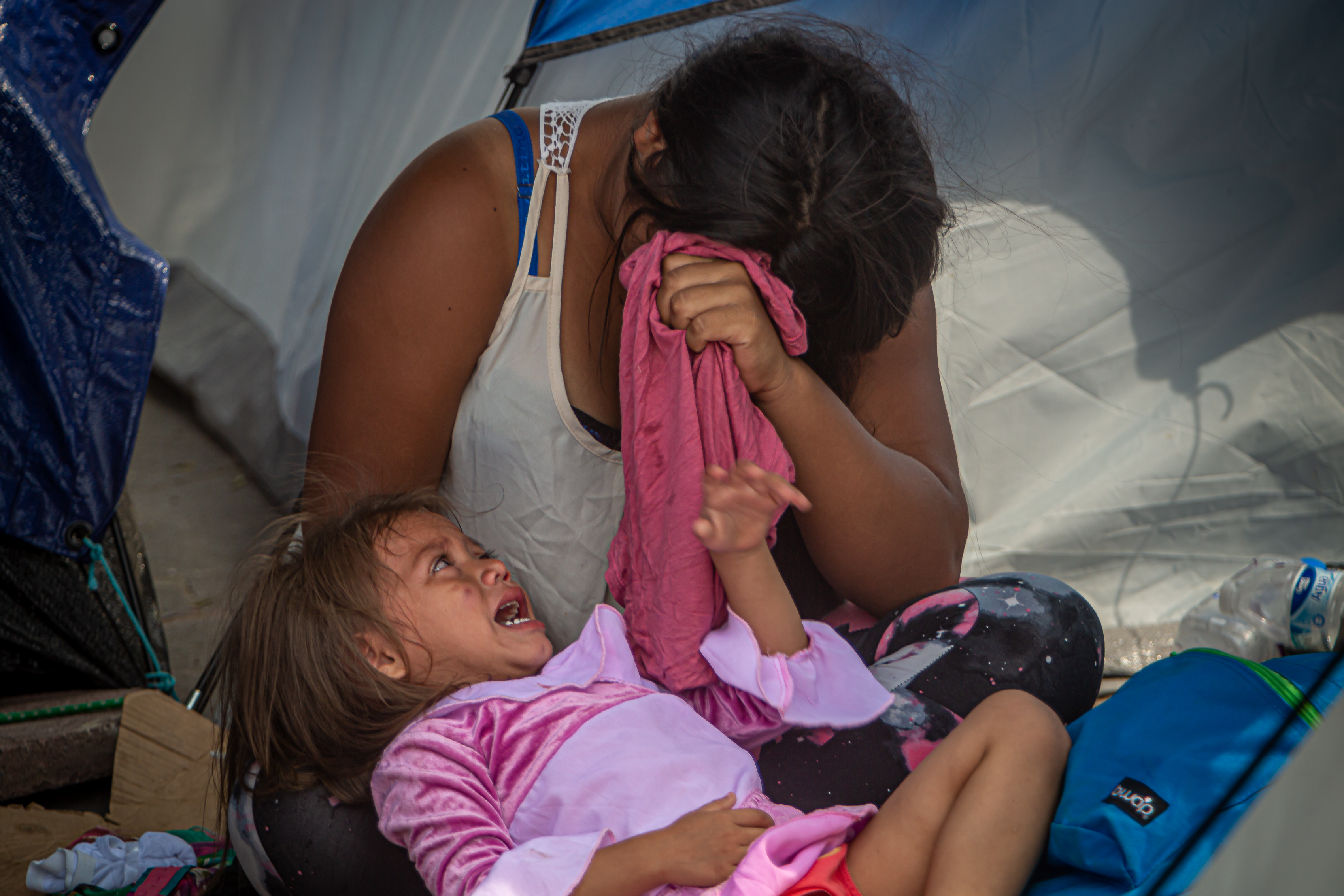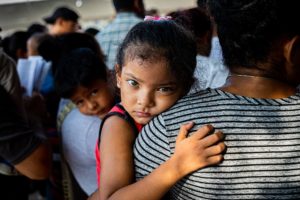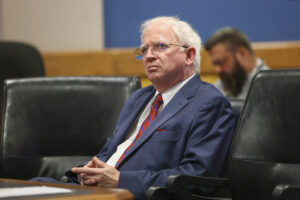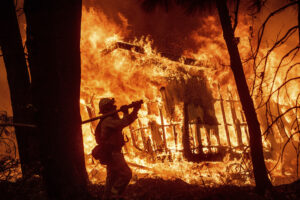American Barbarity on the Border
The political establishment and the greater public have moved on, but the suffering of migrants seeking asylum is only intensifying. Photo Essay
Michael Nigro / Truthdig
Photo Essay
Michael Nigro / Truthdig
 Photo Essay
Scenes From a Border Tragedy of Our Own Making (Photo Essay)
Photo Essay
Scenes From a Border Tragedy of Our Own Making (Photo Essay)
The United States’ current immigration system is functioning exactly the way it is supposed to—it is designed to make people suffer.
The amount of violence the U.S. inflicts on people from around the world is all done in our name. It has become such a common occurrence that, like a fire alarm that blares randomly every day, it has lost all sense of urgency. We tune it out until it becomes white noise.
This is the case for the tens of thousands of asylum seekers at the U.S.-Mexico border who are the targets of Trump and his administration’s dehumanizing, intentional cruelty.
The following series of photographs is from my third assignment to that border, where I have been covering the ongoing and ever-escalating refugee/humanitarian crisis.
This time, I crossed over from Brownsville, Texas, into Matamoros, Mexico. I was embedded with the Atlanta-based group Lawyers for Good Government—a nonprofit organization founded by Traci Feit Love after the 2016 election that has not tuned out the border crisis. Members of the organization have spearheaded a program called Project Corazon and have mobilized nearly 50 other heavy-hitting law firms, all of whom are working on a pro-bono basis to help prepare asylum seekers for upcoming immigration court hearings.
This was unlike Tijuana, Mexico—across the border from San Ysidro, Calif.—where hives of various law enforcement agencies were a common sight when I was there last December and January. In Matamoros, the cartels seem to rule and run the border. I saw a gaggle of armed Federales officers only once there, a half-dozen of them “Mad-Max”-ing atop two militarized trucks through the border area. They were gone within seconds.
Here in Matamoros, no one I speak with on the ground has much trust for the Federales (or the Mexican government, for that matter), and frankly, I could not determine whether their absence makes me feel better or worse.
Cartel scouts masquerade as penny entrepreneurs, selling trinkets and food while walking past the cars waiting in line to drive through customs and into the U.S. They watch everything that is going on in and around the plaza, where dozens of tents are set up on a swath of concrete and roast throughout the day as the temperature often climbs over 100 degrees.
Even now, during hurricane season, it is difficult to move the asylum seekers into shelters, farther from the border. Their overriding fear is that they’ll be taken away, perhaps bused back to the country they had fled. For many, that is a death sentence.
Two rugged trees offer umbrellas of dappled shade in this makeshift community. It’s prime real estate for everyone trying to find a modicum of normalcy, to have a family meal, charge a cellphone, create a sidewalk school for the children, learn the “next steps” from the volunteer lawyers, laugh, play, cry, joke, comfort and tell their stories, hoping that someone will listen.
In a pre-border-crossing meeting with the volunteer lawyers who have been flown in as part of Project Corazon, Texas-based lawyer Jodi Goodwin explains one of the cartel’s abduction tactics: “If you see a bunch of shiny SUVs pull up to the plaza, you alert each other and immediately leave, get across the border.” Goodwin speaks from experience; she has been working with asylum seekers in Mexico for over two decades.
Everyone is a target there. The children are in acute danger of kidnapping (and of contracting life-ruining illnesses). The women live in perpetual fear of sexual assault and, I was told, some carry condoms to—perhaps, maybe—engineer self-care while being brutally raped, a scenario that is baffling to fathom. Many of the men carry around an invisible bulk of their broken lives—which is true for the women and children, too.
Most everyone living in this camp had at one prior point made it into the United States and had made their case for asylum. Some had to swim across the Rio Grande, which is approximately 100 yards away from the tents, but they still had to pay the cartels to allow them to do so. And because there is no running water (or any services to speak of), they often pay the cartels so they can wash clothes or bathe in the river too.
Months before, Salvadoran migrant Oscar Alberto Martínez Ramírez and his nearly 2-year-old daughter, Valeria, had drowned on this very stretch of river trying to reach Brownsville, Texas. The viral photo of their bodies floating face-down near the riverbank depicts the desperation for a better life that more and more migrants are forced to endure.
It is because of Trump’s “Return to Mexico” policy that most asylum seekers are back in Matamoros, where they are stuck in horrific limbo, waiting for their day in U.S. immigration court. The backlog, however, is depressing. According to a New York Times article on the pending immigration cases in the court system, “the average case now takes 578 days to complete.”
To read article after article about the disastrous U.S. immigration policy—or to simply listen to pundits or politicians argue about asylum seekers as if it’s an exercise in high school debate—can make the very real plight of thousands of people seem like an abstraction. But to see it, to bear witness to this suffering is a way of humanizing, a way of showing others that these are people who could be your sister, your brother, your mother, your father, your friend.
Your support matters…
Independent journalism is under threat and overshadowed by heavily funded mainstream media.
You can help level the playing field. Become a member.
Your tax-deductible contribution keeps us digging beneath the headlines to give you thought-provoking, investigative reporting and analysis that unearths what's really happening- without compromise.
Give today to support our courageous, independent journalists.









You need to be a supporter to comment.
There are currently no responses to this article.
Be the first to respond.